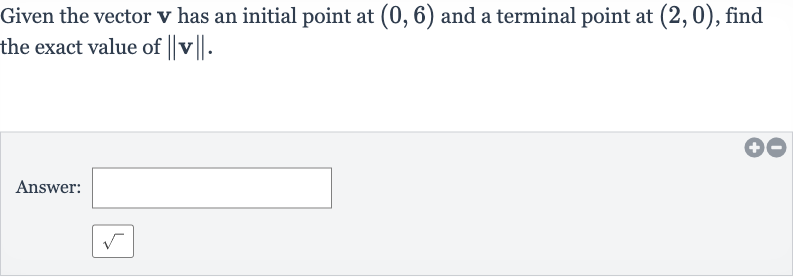AI tutor
Welcome to Bytelearn!
Let’s check out your problem:

Given the vector has an initial point at and a terminal point at , find the exact value of .Answer:
Full solution
Q. Given the vector has an initial point at and a terminal point at , find the exact value of .Answer:
- Distance Formula: To find the magnitude of vector , we need to use the distance formula, which is derived from the Pythagorean theorem. The distance formula for a vector with initial point and terminal point is:Let's calculate the magnitude of vector with the given points.
- Calculate Differences: First, we find the differences in the x and y coordinates:
- Square Differences: Now, we square the differences:
- Add Squares: Next, we add the squares of the differences:
- Find Magnitude: Finally, we take the square root of the sum to find the magnitude of vector :Since is not a perfect square, we can simplify the square root by factoring out perfect squares:
More problems from Transformations of absolute value functions: translations and reflections
QuestionGet tutor help
QuestionGet tutor help
QuestionGet tutor help
QuestionGet tutor help
QuestionGet tutor help
QuestionGet tutor help
QuestionGet tutor help
QuestionGet tutor help
QuestionGet tutor help
